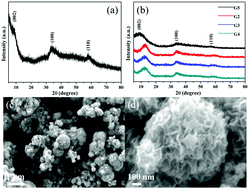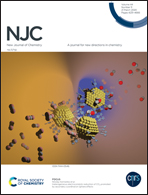Preparation of MoS2 nanoflowers with rich active sites as an efficient adsorbent for aqueous organic dyes
Abstract
In this study, molybdenum disulfide (MoS2) was used as an adsorbent to quickly and efficiently remove Rhodamine B (RhB) from wastewater. Ultrathin layered MoS2 nanoflowers with rich active sites were prepared via a hydrothermal method. The ultrathin layered MoS2 nanoflowers exhibited remarkable adsorption capacity for RhB dyes, which reached 365 mg g−1 within 20 min, due to the large specific BET surface area, the large amount of active sites and the intensive electrostatic attraction between the negative charges of MoS2 nanoflowers and the RhB cationic molecules. The large BET surface area (71.7 m2 g−1) could provide a high number of active sites and storage centers for the RhB molecules. The adsorption behaviors were well fitted with the pseudo-second-order adsorption model and the Langmuir isotherm model. The reusability tests demonstrated that the MoS2 nanoflowers could be reused 6 times and could retain more than 85% of their adsorption capacity. The results exhibited that the MoS2 structure had significant adsorption capacity and could be used as an adsorbent in wastewater treatment.



 Please wait while we load your content...
Please wait while we load your content...